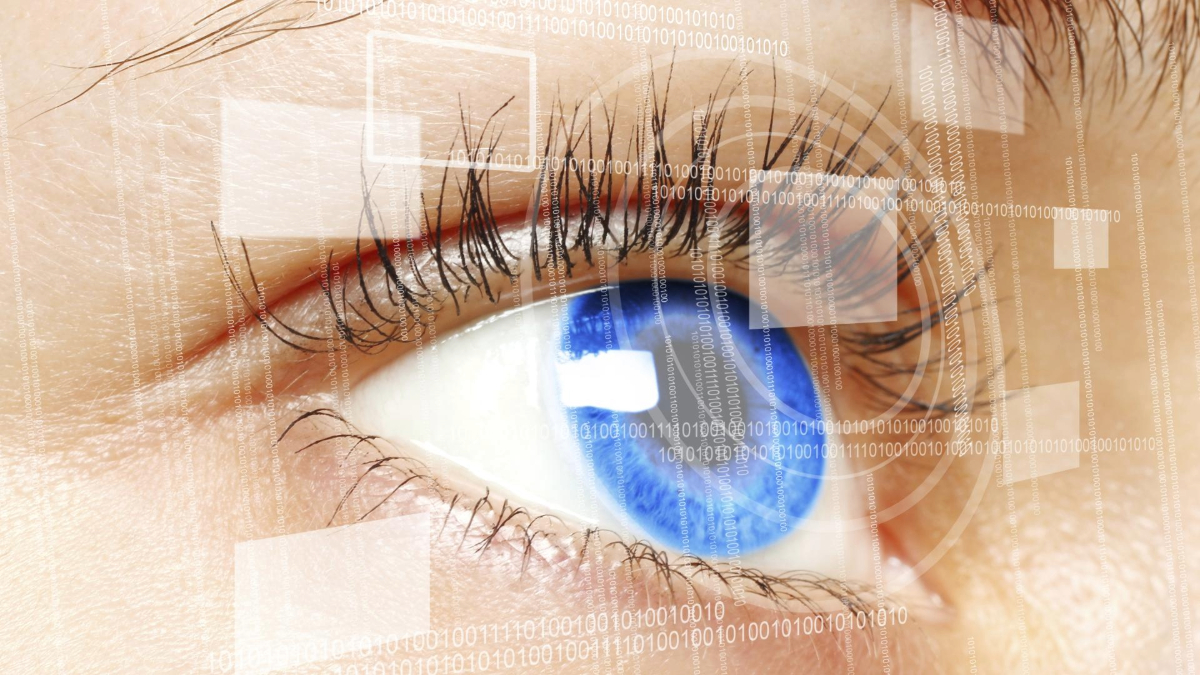
In this era of “seeing” robots and “bionic” body parts, patients sometimes ask about the possibility of an artificial electronic retina. Such a device was approved last year by the FDA, providing rudimentary vision for blind patients and the hope that future advances in the technology will help even more people who have lost vision.
The Argus II Retinal Prosthesis System
The name of the device is the Argus II, manufactured by Second Sight Medical Products. It uses a small electronic chip surgically implanted onto the retina. The patient wears glasses containing a small video camera that wirelessly transmits images to the chip. The images look like multiple white spots of light.
Currently, the resolution is limited, as the device has 60 pixels. It can enable patients with the progressive, hereditary disease retinitis pigmentosa, who previously could see little or no light, to read large letters, determine the location of moving objects or people, and detect street curbs.
Patients who have lost central vision due to age-related macular degeneration would not likely experience much benefit from an Argus II because their peripheral vision is still better than that provided by the device. However, further advances in chip technology may increase the level of vision. Second Sight is planning to increase the number of electrodes to 240 in a future model.
In addition to having limited numbers of pixels, the implants also lack the information processing that occurs in layers of neurons within the retina. Despite these limitations, some patients have reported improved visual experiences provided by the chips over time, as they learn to interpret the novel light patterns provided by the chips, which stimulate the healthy neurons on the surface of the retina.
Other Approaches to Restoring Vision
In addition to improved retinal implants, additional approaches to restoring vision are being tested. In one approach, rather than stimulate the retina, an electronic chip directly stimulates the visual cortex, the part of the brain responsible for seeing.
Another approach is to use gene therapy to deliver light sensitive molecules to the retina. In retinitis pigmentosa, the light sensitive photoreceptors die. However, the neurons that receive signals from the photoreceptors remain functioning. Making these remaining cells sensitive to light can effectively bypass the photoreceptors, restoring some degree of vision in animal models. How this type of vision will compare to that provided by chip implants is not yet known.
The fact that electronic retinal implants are already approved for use in patients with retinitis pigmentosa and gene therapy for human blindness is in advanced clinical trials bodes well for future vision restoration or protection for people with retinal diseases.
About BrightFocus Foundation
BrightFocus Foundation is a premier global nonprofit funder of research to defeat Alzheimer’s, macular degeneration, and glaucoma. Since its inception more than 50 years ago, BrightFocus and its flagship research programs—Alzheimer’s Disease Research, Macular Degeneration Research, and National Glaucoma Research—has awarded more than $300 million in research grants to scientists around the world, catalyzing thousands of scientific breakthroughs, life-enhancing treatments, and diagnostic tools. We also share the latest research findings, expert information, and resources to empower the millions impacted by these devastating diseases. Learn more at brightfocus.org.
Disclaimer: The information provided here is a public service of BrightFocus Foundation and is not intended to constitute medical advice. Please consult your physician for personalized medical, dietary, and/or exercise advice. Any medications or supplements should only be taken under medical supervision. BrightFocus Foundation does not endorse any medical products or therapies.
- Vision Restoration









